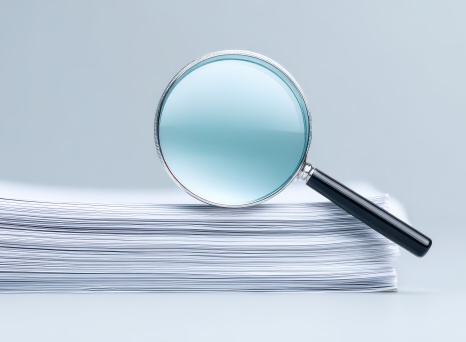You’ll be hard-pressed to find a portfolio manager who doesn’t mention money when discussing a project.
Money, in regard to budget, is one of the most important factors of project management, alongside scope and time. These three factors all act together in what we refer to as “The Triple Constraint”. For example, if you shorten the timeline of a project, you’ll have to increase costs.
This is why accurate project financials are so important. Without a clear understanding of your spending and how it impacts your projects (and vice versa), it’s harder to respond to changes. This is why many large-scale projects go over budget.
Today, we’ll explain in further detail why project financials matter in your organization. We’ll also outline how a solid Project Portfolio Management (PPM) tool can help you keep track of your financial data.
Why Project Financials Matter
Imagine you’re nearing the finish line of a project. Your teams are raring to tie up loose ends; your client seems satisfied with your work… But your budget is spilling over. You’ve spent too much and, thus, your return will be smaller.
It’s a problem even large-scale projects with extensive resources and government backing run into. Consider the Boston Big Dig megaproject, for instance, which reached completion 9 years later than predicted and faced numerous delays, legal problems, and mounting expenses. In the end, the project cost almost 4 times its original budget.
Of course, no matter the scale of your project, overspend is a painful situation for any project manager - particularly those who must have a tough conversation with their stakeholders. In these instances, you may have to navigate the possibility of cutting funding elsewhere in the project, extending deadlines, or even requesting more funds.
Now, imagine you have the ability to better track your financials alongside your projects. By tracking your data, and seeing how decisions impact costs (and vice versa), you stand a better chance of delivering successful projects and — much to your stakeholder’s satisfaction — keeping your budget under control. (Now, that’s got to feel good!)
Of course, there are more reasons for tracking financial data beyond this. It can be especially useful when:
- Presenting your projects. When creating business cases for your projects, you must include financial analyses that will help stakeholders understand the expected resources needed. This allows you to determine whether your project is viable and will return a healthy investment.
- Determining margins. What’s more, if a project is for a customer, you’ll need to predict what your margin will be upon completion. During the lifecycle of the project, you will need to manage this prediction, ensuring you continually update expenses to create an accurate forecast.
- Ensuring customer satisfaction. Without closely tracking your budget, you may end up overspending or dissatisfying your customers. Financial analytics allow you to identify cost fluctuations and talk to your customers sooner, should there be project overspending. Then, you can better explain why the costs increased and involve them in any trade-off discussions.
- Coordinating project resources. Understanding project financials will help you coordinate resource allocation across your interconnected projects. If one project is below your budget predictions, you may be able to funnel the extra money into another priority project.
- Measuring progress. As one of the key indicators of progress, measuring financial data will allow you to determine the health and status of your project. Going over budget will, in most cases, indicate risk. If you can spot these warning signs early on, it’ll be easier to escalate problems and find creative solutions.
5 Benefits of Project Financials in Your PPM Tool
Being so intrinsic to portfolio project management, you’ll find financial tracking features in most PPM tools. With this functionality, it’s easier to find correlations between project tasks and cost streams. This is particularly hard to determine if you use a range of distributed, disconnected tools.
Of course, not all platforms are built the same. But a good PPM tool will allow you to:
1. Keep a Close Eye on Spending
With live, aggregated financial data, you can dive into your project’s financial health at the click of a button. Better still, you can open these insights up to your stakeholders.
This is especially beneficial for busy executives who lack the time to sit on every weekly or monthly update. By accessing this information in an intuitive PPM tool, they can monitor costs and - should there be an issue - flag any issues or priorities.
2. Make Cost Decisions Quickly
A good PPM tool will combine project management and cost control functionality. This allows you to view project decisions in conjunction with critical financial data, such as actuals vs. project budget and awaiting and approved invoices.
These side-by-side insights will help you better react to events, inform your cost decisions, and maximize your project margins.
3. Simulate Cost Impact
By connecting your budgetary information with your project activities, you can receive detailed analytics that help you better predict financials.
More sophisticated tools will also simulate cost outcomes based on hypothetical contract changes. This can help your teams test scenarios before making important decisions, which can help to mitigate losses.
4. Streamline Revenue Recognition
To give you better insights into your revenue streams, your PPM tool should map contractual performance obligations to key milestones or tasks in your project plans.
This streamlined revenue recognition can help you determine what projects, contracts, or events are more profitable than others. As you reflect on project wins, this can be especially important.
5. Collate All Your Financial Activities
Last but certainly not least is the ability to place all your financial activities in one centralized platform.
The right PPM tool will allow you to:
- Integrate with your other systems, such as ERPs and accounting platforms.
- Manage payments and expenditures.
- Build financial information into your project models and schedules.
- Track important payment dates and invoice deadlines.
- Understand resource drains and correlate project hours with financial losses.
- Upload and integrate necessary documentation and conversations.
By consolidating your project financials in one sophisticated tool, you can speed up activities such as claims investigations and purchase requests. This not only keeps your projects moving but can help to ensure positive financial outcomes that satisfy your stakeholders and clients alike.


